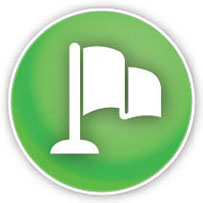Teaching Tips for New Special Populations Educators
 General Instructions
General Instructions
- Evaluate the students’ individual needs: assess the unique needs of your students.
- Select appropriate instructional practices: how will you meet the academic and behavioral needs of the students
- Integrate appropriate practices within an individualized program: plan how to integrate educational activities provided to other children in your class with those of the IEP child.
- Review lesson plans:set learning expectations, set behavioral goals, state needed materials, explain additional resources.
- When conducting an academic lesson effective teachers: use audio-visuals, check student performance, ask probing questions, perform ongoing student evaluation, help students self-correct, focus dawdling students, lower noise levels, check assignments, preview for the next lesson.
Language Arts
- Reading and comprehension: Silent reading time (have a fixed time each day), follow along reading (child reads silently while you read aloud), partner reading activities (pair the child with another student), story boards (have students make story boards that illustrate the sequence of events), play acting, word bank, board games for reading comprehension, computer games for reading comprehension.
- Phonics and grammar: Mnemonics for phonics and grammar, word families, everyday examples of grammar, board games for phonics and grammar, computer games for phonics and grammar, structured programs for phonics and grammar.
- In composing stories and other writing: standards for writing assignments (identify and develop class-wide standards) the teach the child class wide standards), recognize parts of a story (teach students how to describe the major parts of the story), Post office (establish a post office in the classroom and provide students with opportunities to write, mail and receive letters to and from their classmates and teacher), visualizing composition (ask the child to close his or her eyes and visualize a paragraph that the teacher reads), proofreading.
- Spelling: teach frequently misspelled words, use a partner spelling activity, use manipulatives, use color-coded letters, use movement activities, use everyday examples of hard-to-spell words.
- Handwriting: individual chalkboards, quiet places to work, spacing for words on the page, tape recorders, dictating writing assignments, structured programs for handwriting.
Mathematics
- Recognizing patterns in mathematics: pair a child with anther students, mnemonics for basic computation, real-life examples of money skills, color coding, arithmetic symbols, board games for basic computers, structured programs for basic computation.
- Solving word problems: re-reading the problems, using clue words, mnemonics, real-life examples.
- Special materials: number lines, manipulatives, graph paper.
Additional Skills and Behavior
- Organizational skill: assignment notebook, color-coded folder, homework partners, cleaning out desks and book bags, using a wrist watch, using a calendar, practicing sequencing activities, creative a daily activity schedule.
- Study skills: use Venn diagrams, note-taking skills, develop a checklist of frequent mistakes using a checklist of homework supplies, prepare uncluttered workspace, monitor homework assignments.
- Behavioral Management: verbal reinforcement, verbal praise, verbal reprimands, selective ignoring of inappropriate behavior, visual clues, proximity control.
- Counseling: classroom interview, social skills classes, behavioral contract, tangible rewards, token economy system, seat near the teacher, seat near a student, role model, hand gestures, use egg timers, classroom lightening should be controlled, follow up on oral instructions, follow up on written instructions, highlight key words, use pointers, adapt worksheets.
 General Instructions
General Instructions